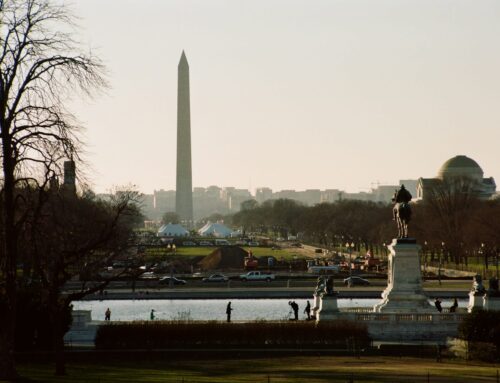In the midst of what promises to be one of the worst forest fire seasons on record, the Forest Service had an opportunity this week to admit that they could do a better job with the hundreds of millions of dollars they spend on forest fires. Sadly, Forest Service officials have instead relied on political demagoguery and have blamed everyone but themselves for our nation’s wildfire crisis.
The beltway blame game is all but guaranteeing that Washington will do little to help stop this national catastrophe from repeating itself again in the future. Every year, the Forest Service is handed a blank check to fight the fires, and Congress has not bothered to hold them accountable for how that money is spent.
The biggest problem is that the Forest Service isn’t targeting the highest risk areas. Congress has encouraged the Forest Service and other agencies to focus their efforts in and around communities in the interior West, yet much of the funding goes elsewhere, and most of the communities targeted were in the eastern United States where there is a much smaller fire risk.
Of the 11,376 high-risk communities identified by the forest service and other agencies last fall, only one-third are in the West. The list included communities far from the nearest wildfire threat, including New Orleans, LA, Queens, NY, as well as communities in Guam, the Virgin Islands and Puerto Rico. Further, 80 percent of all prescribed burning, one of the primary methods of reducing fire risk, is taking place in the southern and eastern regions, where severe wildland fires do not pose a significant threat.
The Forest Service has also proven to be inept at using real wildfire-protection strategies to protect communities. Such preventative measures include the thinning of forests in the immediate vicinity of structures. In a report released by the Office of Inspector General (OIG), the Forest Service spent $1.8 million of scarce fire restoration funds, which help reduce fuels, in the Bitterroot National Forest to plan and administer commercial timber sales. The report further concluded that a severe lack of disclosure and review of projects allows the Forest Service to pursue nearly any project and use fire plan money to pay for it.
Politicians and the Forest Service will argue that cutting down trees in the forests is the best way to reduce wildfire risk. The fire-prevention budget has been used to administer commercial timber sales to supposedly “th.png” out the forest. Unfortunately, the efforts to remove “fuels” more often involve the removal of large, green, fire-resistant trees than smaller, less-valuable, fire-prone trees.
Rather than judging the success of fire-risk reduction projects on how many communities are protected or the amount saved from fire suppression, the Forest Service continues to base success on the number of acres treated. This leads to the treatment of the cheapest areas, which are often located furthest from at-risk communities.
This lack of commitment to protecting the most at-risk communities from wildfires is a testimony to the need for new oversight mechanisms in the Forest Service. Just as one would not hand over their car to a knowingly unaccountable mechanic and say, “don’t worry about the cost,” neither should Congress hand over a blank check to the Forest Service without serious evaluation.
The wildfire blame game doesn’t solve the problem – it moves us farther away from the goal of effectively managing the wildfire risk in our national forest. Past fire management mistakes have turned our national forests into a tinderbox. The Forest Service knows how to fix this problem: a balanced diet of fire prevention and suppression will return our forests to good health.











Get Social